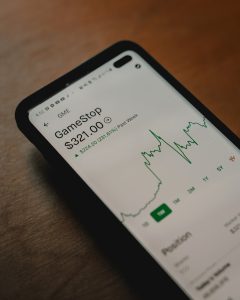The foreign exchange market, also known as the forex market, is a decentralized market where currencies are traded. It is the largest financial market in the world, with an average daily trading volume of over $5 trillion. Forex trading involves buying and selling currencies with the aim of making a profit. However, knowing which way the forex market is going can be a challenge for both novice and experienced traders. In this article, we will discuss some tips on how to know which way the forex market is going.
1. Fundamental Analysis
Fundamental analysis is a method of analyzing financial markets by looking at economic, financial, and other qualitative and quantitative factors. It involves analyzing economic data, such as GDP, inflation, employment, and interest rates, to determine the strength of a country’s economy. The strength of a country’s economy can affect the value of its currency. For example, if the economy is strong, the currency is likely to appreciate, and if the economy is weak, the currency is likely to depreciate.
Traders use fundamental analysis to identify long-term trends in the forex market. For example, if a country’s economy is growing, its currency is likely to appreciate over time, and if its economy is shrinking, its currency is likely to depreciate over time. By analyzing economic data and news, traders can get a better understanding of which way the forex market is going.
2. Technical Analysis
Technical analysis is a method of analyzing financial markets by looking at price charts and other technical indicators. It involves identifying patterns and trends in price movements and using them to make trading decisions. Technical analysis can help traders identify short-term trends in the forex market.
Traders use technical analysis to identify support and resistance levels, trend lines, and chart patterns, such as head and shoulders, triangles, and double tops and bottoms. By identifying these patterns and levels, traders can determine where to enter and exit trades, and where to place stop-loss and take-profit orders.
3. Sentiment Analysis
Sentiment analysis is a method of analyzing financial markets by looking at the opinions and attitudes of traders and investors. It involves analyzing social media, news articles, and other sources to determine the sentiment of the market. Sentiment analysis can help traders identify short-term trends in the forex market.
Traders use sentiment analysis to identify market sentiment, such as bullish or bearish. By analyzing market sentiment, traders can determine whether to buy or sell a currency. For example, if market sentiment is bullish, traders may want to buy a currency, and if market sentiment is bearish, traders may want to sell a currency.
4. News Events
News events can have a significant impact on the forex market. Traders should keep an eye on news events, such as economic data releases, central bank announcements, and geopolitical events, as they can impact currency values. For example, if a central bank announces a change in interest rates, it can affect the value of the currency.
Traders should have a calendar of upcoming news events and be prepared to adjust their trading strategy accordingly. By staying informed about news events, traders can get a better understanding of which way the forex market is going.
Conclusion
Knowing which way the forex market is going can be a challenge for both novice and experienced traders. However, by using fundamental analysis, technical analysis, sentiment analysis, and monitoring news events, traders can get a better understanding of which way the forex market is going. It is important to remember that forex trading involves risk and traders should always have a solid trading plan and risk management strategy in place.






